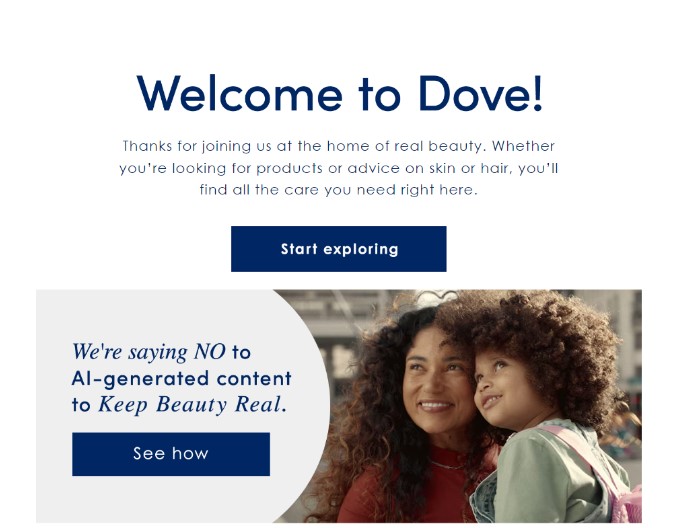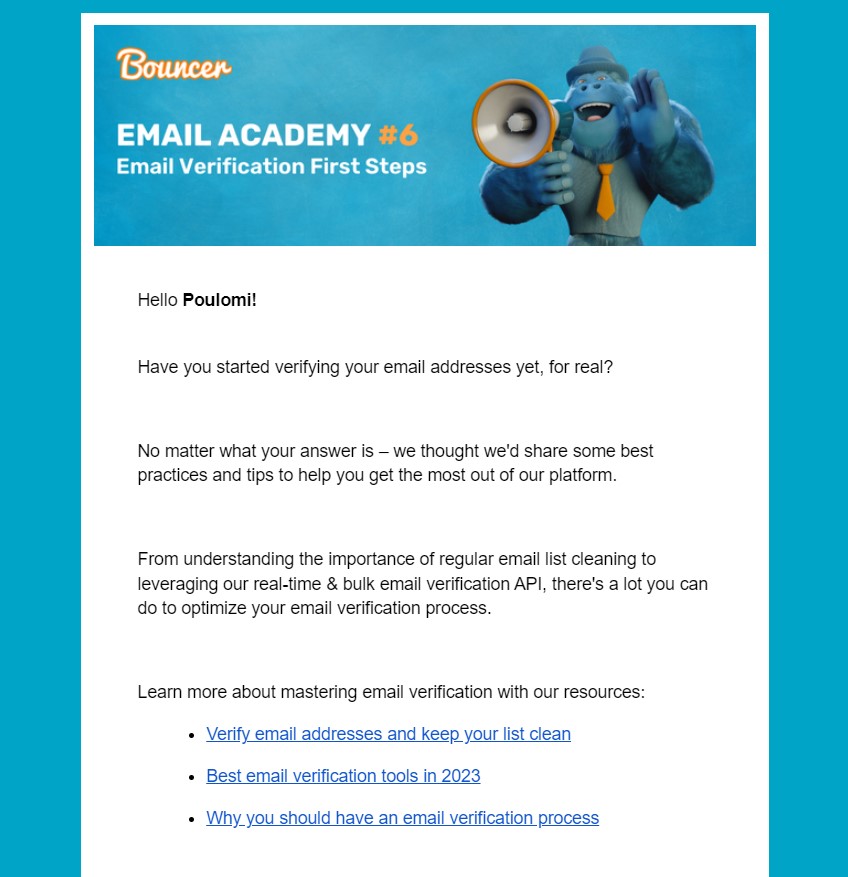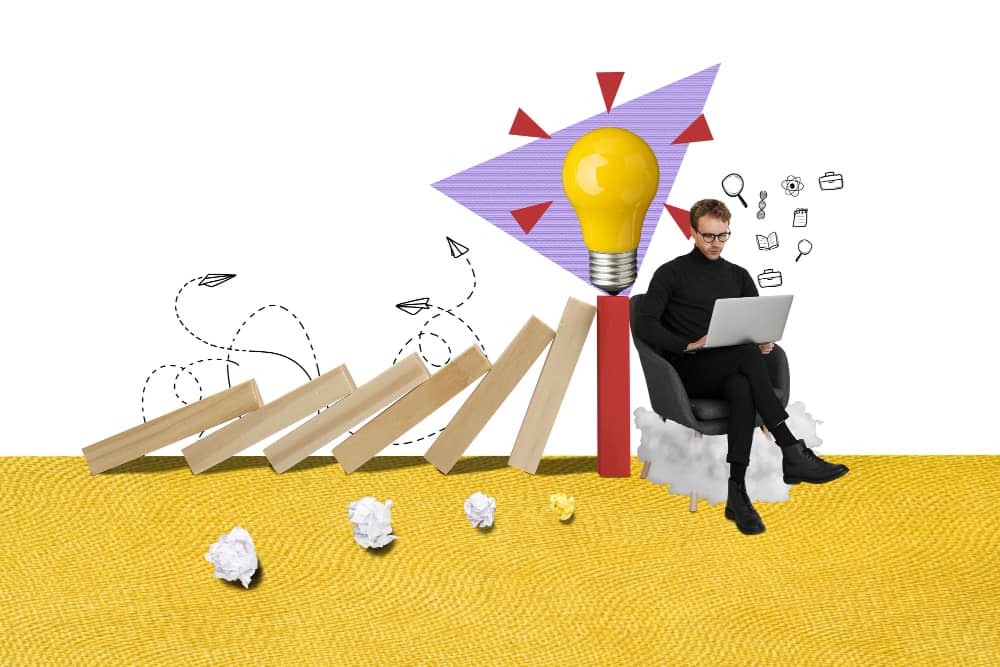How can storytelling persuade subscribers’ behavior, enhance brand loyalty, and increase sales inside emails? In this blog article, we will cover everything around storytelling in emails and the 5 different styles of storytelling you can use inside your email copies.
What is Storytelling?
The art of communicating messages, facts, concepts, and incidents through an engaging narrative is called storytelling. Depending on the brand’s core values and emotions, these stories can range from fact-based to fables and everything in between.
Why does Storytelling in Marketing Work?
Here are 4 reasons why storytelling can persuade buyers and impact overall marketing:
- Stories simplify concepts: Complex concepts, abstract concepts, products and service functionalities can be easily explained through stories. The subscriber goes through the story journey, meets all the checkpoints and is in tune with everything the brand has to offer, the concepts it wants to share with, and the ideas it wants to deliver.
- Easy to remember: Brand taglines, mottos, and what the company offers are easily forgettable by the audience. This results in lessened brand loyalty. The best way for the audience to remember the brand is to share the brand’s story. It’s engaging, creates a visual memory and helps the audience to remember the brand with ease.
- Unites the audience: Brand stories unite their tribe. The ones who relate to the story become their loyal consumer now, more than ever. The ones who do not relate automatically get filtered out.
- Humanizing the brand: Standing in 2024, marketing is way past telling people to buy products. Unless the audience connects with the brand, the product or service alone can only make waves up to a certain extent.
This is where humanizing the brand through stories comes into play. Audiences absorb the brand better, remember it for longer, and connect with it at an individual level.

Best Practices for Storytelling Inside Email Copies
To craft a captivating story, it’s important to be familiar with the fundamentals of writing. Here are 6 best practices to follow while using storytelling inside persuasive copies.
- Know Your Audience: Understand who you’re writing for — what they care about, what challenges they face, and how your product/service can help.
- Start Strong: Grab attention from the get-go with a compelling opening line or a relatable story hook.
- Show, Don’t Just Tell: Use descriptive language to convince subscribers of the necessity and usefulness of your product. Help subscribers visualize how your offering can solve their problems.
- Use Vivid Imagery and Descriptions: Paint a vivid picture with both your words and striking imagery to evoke emotions and sensory experiences. Engage the subscribers’ imagination to make the story come alive.
- Maintain Authenticity: Use a friendly, conversational tone that feels authentic to your brand. Avoid jargon or salesy language.
- Clear Call to Action: Guide your audience towards taking the next step. Whether it’s clicking a link, signing up for a trial, or making a purchase, make your call to action clear and compelling.
Do’s and Don’ts of Storytelling in 2024
Do’s:
- Personalize Based on Behavioral Data: Utilize data insights to personalize your storytelling approach. Segment your audience and tailor stories that resonate with their behaviors and preferences.
- Incorporate Interactive Elements: Engage subscribers with interactive storytelling techniques like quizzes or clickable narratives within emails. This boosts engagement by making the experience more immersive.
- Create Stories with Emotional Appeal: Craft stories that resonate with your audience. Connecting on an emotional level makes your brand’s messaging more memorable and compelling.
Dont’s:
- Write Long-winded Stories: Keep your stories concise and focus on one idea at a time. Avoid overwhelming the audience with overly lengthy narratives that dilute your message and make the readers lose interest.
- Forget Mobile Optimization: Optimize your storytelling emails for mobile devices. A significant portion of subscribers view emails on smartphones, so readability and usability on smaller screens are crucial.
- Neglect Segmentation: Avoid sending generic, one-size-fits-all stories to your entire email list. Create segments based on user behavior, demographics, psychographics, and purchase behavior and tweak the story-driven emails accordingly.
5 Different Styles of Storytelling to Use in Your Emails
Whatever your brand’s style of writing copies may be, there is a storytelling format to fit that. Let’s look into the five primary styles of storytelling inside emails.
1. The Hero Style
In this style, brands develop a hero character with a name and visual identity, and use that to communicate their stories. For example, Bouncer uses Winston to narrate the emails. Every time it hits the mailbox, it feels like Winston has written it.

As a subscriber, you go through the journey with the hero and start to associate the brand with this character, in turn helping with brand recollection, uniqueness and standing out.
2. The Journey Story
The journey style of storytelling takes the reader through the entire journey through 6 stages:
- Recognition: Helping the subscribers find themselves and recognize that it’s them about who the story is.
- Problem: The story then faces the problem that your ideal target audience generally faces.
- Peak: Here, the subscribers reach the peak of this problem and see how it is impacting their lives overall.
- Solution: The solution is introduced next, and the subscribers go through that feeling of relief.
- Climax: The story climaxes when the subscribers see the transformation and ease they can receive by the end of this journey.
- Happy ending: It ends with this positive feeling and a strong CTA to help the subscribers take the next step and guide them toward a great outcome in their lives.
3. The Relatable Story
Real-life stories and instances build up relatable narratives. These stories help your subscribers feel deeply connected with the brand. They feel connected, heard, and understood through their day-to-day lives and in turn trust the brand more.

This results in building brand loyalty. No matter which brand comes up, your brand will be the first one that strikes their mind whenever they need the product or service you are offering. This also extends to brand publicity, where your subscribers even mention these stories to other non-subscribers, resulting in more publicity.
4. The Brand Emotion Story
Every brand has a set of core emotions it wants to depict. Their brand guidebook, colors, and overall brand messaging are aligned with these feelings. Emotions and styles such as trustworthy, humorous, quirky, new-age, etc., can be creatively depicted through copies as well.
Using relevant stories that depict the brand’s emotions helps to communicate the feeling effectively with your subscribers. The ones who resonate with these emotions become your loyal customers and persuade sales in the long run.

5. Series-based storytelling
This is one of the most effective and highly underrated styles of storytelling inside email marketing, helping to build up a cohesive narrative journey. The amount of series we consume regularly is the standing proof of its success.
Why does it work? Let me share with you 4 reasons:
- These emails are a set of 4-5 emails and not a stand-alone campaign, taking your subscribers through a journey and keeping them hooked.
- The emails are relatively bite-sized, making them short, effective, and easy to consume.
- Each email ends in a cliffhanger with a teaser for the next part similar to the series, keeping the subscribers hooked for the next part.
- Helps to increase the metrics and communicate the message in a much more effective manner throughout the series.
Final Thoughts
However, it’s not every series that we stick through. It’s not every series that we desperately wait for the next part. So, what does it take to craft an effective story series inside your emails? That is effective, keeps your subscribers wanting more, and increases sales all in one? 👇
Keep your eye on our blog, as soon we will write about crafting sales effective story series inside emails with a 5 part series example.
About the Author

